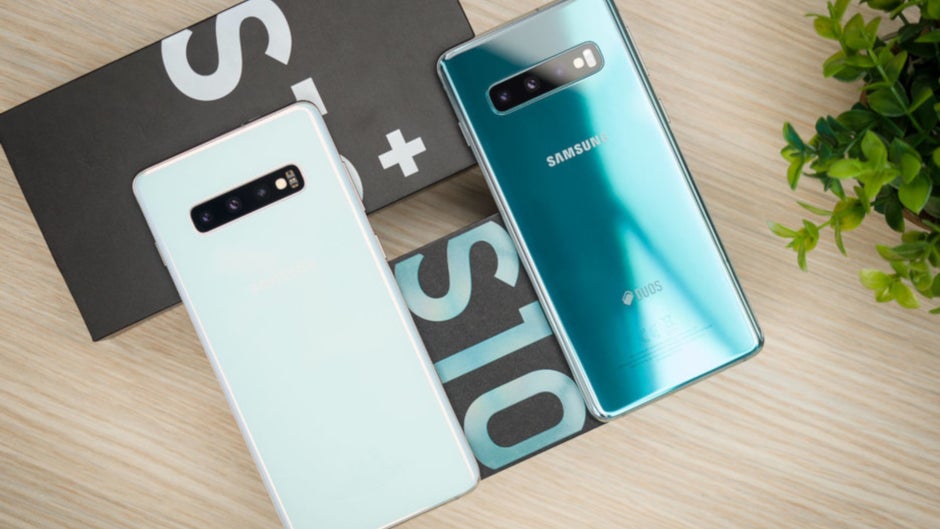Samsung says its Galaxy S10 series had "solid sales" for the first quarter

Samsung announced its first-quarter earnings yesterday; the company said that while results for the period were negatively impacted by weak demand for memory chips and displays, the Samsung Galaxy S10 series had "solid sales." While overall demand for smartphones decreased in the quarter due to seasonal weakness, revenue for the division rose sequentially from the fourth quarter of 2018 because of the Galaxy S10e, Galaxy S10, and Galaxy S10+.
Samsung noted that growth in handset shipments was hurt by a reorganization of its low and mid-range phones. This led to lower sales of previous models. During the quarter, Sammy replaced the Galaxy J mid-range line with the Galaxy A series. The new units feature larger capacity batteries, multi-camera setups in back, in-display fingerprint scanners and faster charging. But the expense of equipping the Galaxy A phones with higher-end specs, along with increased marketing expenses, reduced the profitability of the unit.
Despite continued seasonal weakness expected for the second quarter, from April through June the company expects slightly higher smartphone demand compared to the first quarter. Samsung says that phones like the Galaxy S10 5G and Galaxy A80 will help strengthen its lineup for the current quarter. For the second half of this year, the Galaxy Note 10 and new Galaxy A models will help Samsung ride the wave of strong seasonal demand to produce stronger results. The Galaxy Fold should also contribute during the last six months of 2019, along with its 5G devices. During the third and fourth quarter of this year, Samsung's smartphone business will also improve as the company seeks to cut costs in the division.
For the first quarter, the mobile division generated 27.20 trillion Korean Won in revenue ($23.4 billion USD) compared to 28.54 trillion Won during last year's Q1. While down year-over-year, revenue rose from the 23.32 trillion Korean Won garnered by the unit last quarter. Operating profit for the first three months of the year reached 2.27 trillion Won ($1.9 billion USD). That was down 40% year-over-year from the 3.77 trillion Won in operating profit reported by the company last year. Still, it was 50% higher than the 1.51 trillion in operating profit that Samsung earned in the fourth quarter of 2018.
Samsung sees a rebound in demand for flexible OLED displays in the second half of the year
While Samsung is bullish for the second half, it didn't have anything to say about the problems that caused it to delay the release of the Galaxy Fold. The $1,980 foldable device was originally scheduled to be released on April 26th, but problems with the internal screen have caused it to postpone the launch. Some of the problems came when influencers mistook a plastic film on the 7.3-inch folding display for a protective plastic that should be peeled off. But Samsung had included a warning that told users not to take off the film since it could lead to serious damage. While this can be remedied with stronger warnings placed where users can't miss seeing them, there were other problems ranging from debris getting inside the hinge to screens that simply stopped working correctly.

Despite a delayed launch, Samsung still expects the Galaxy Fold to do well in the second half of this year
Speaking of the Galaxy Fold, Samsung expects its Display Panels business to see a second-half rebound in demand for flexible OLED panels after suffering weak demand for such panels during the second quarter. For the first quarter, the company said that the mobile display unit ran into slower demand and competition from Low-Temperature PolySilicon (LTPS) LCD screens.
The company's chip business will improve his quarter with the launch of more high-end phones carrying 256GB of storage and higher. Demand for 5G chipsets is also expected to rise, and Samsung says it will start offering 3D/fingerprint-on-display sensors. The company also discussed its foundry operations. Samsung is almost ready to start manufacturing 6nm chips that use extreme ultraviolet lithography (EUV). EUV uses ultraviolet beams to more precisely place transistors on integrated circuits. The company is also developing 5nm technology, and during the second half of the year, it will start work on 4nm (EUV) technology and beyond. Mass production of 7nm chips will take place over the second half of the year. This means that Samsung is working on stuffing more transistors into a chip which will allow devices like smartphones to offer greater performance while consuming less energy.
Follow us on Google News












Things that are NOT allowed:
To help keep our community safe and free from spam, we apply temporary limits to newly created accounts: